
|
You entered: image
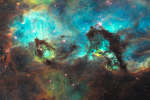 The Seahorse of the Large Magellanic Cloud
The Seahorse of the Large Magellanic Cloud
23.03.2009
To some it may look to some like a big space monster, but it is more big than monster. To others it may look like a grazing seahorse, but the dark object toward the image right is actually an inanimate pillar of smoky dust about 20 light years long.
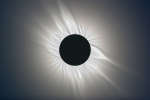 The Big Corona
The Big Corona
26.07.2009
Most photographs don't adequately portray the magnificence of the Sun's corona. Seeing the corona first-hand during a total solar eclipse is best. The human eye can adapt to see features and extent that photographic film usually cannot. Welcome, however, to the digital age.
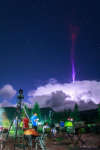 Gigantic Jet Lightning over China
Gigantic Jet Lightning over China
23.08.2016
That's no meteor. While watching and photographing this year's Perseid Meteor Shower, something unexpected happened: a gigantic jet erupted from a nearby cloud. The whole thing was over in a flash -- it lasted less than a second -- but was fortunately captured by an already-recording digital camera.
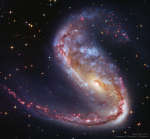 APOD: 2020 August 4 Б NGC 2442: Galaxy in Volans
APOD: 2020 August 4 Б NGC 2442: Galaxy in Volans
4.08.2020
Distorted galaxy NGC 2442 can be found in the southern constellation of the flying fish, (Piscis) Volans. Located about 50 million light-years away, the galaxy's two spiral arms extending from a pronounced central bar have a hook-like appearance in wide-field images.
24.11.2016
Scroll right and you can cruise along the icy rings of Saturn. This high resolution scan is a mosaic of images presented in natural color. The images were recorded in May 2007 over about 2.5 hours as the Cassini spacecraft passed above the unlit side of the rings.
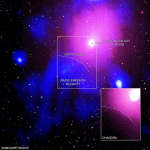 An Extreme Black Hole Outburst
An Extreme Black Hole Outburst
11.03.2020
Astronomers believe they have now found the most powerful example of a black hole outburst yet seen in our Universe. The composite, false-color featured image is of a cluster of galaxies in the constellation of Ophiuchus, the serpent-bearer.
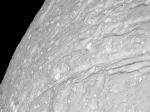 Cratered Cliffs of Ice on Saturns Tethys
Cratered Cliffs of Ice on Saturns Tethys
12.10.2005
The surface of Saturn's moon Tethys is riddled with icy cliffs and craters. The most detailed images ever taken of Tethys were captured late last month as the robot Cassini spacecraft swooped past the frozen ice moon.
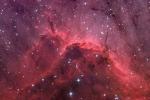 IC 5067: Emission Nebula Close up
IC 5067: Emission Nebula Close up
27.12.2006
This amazing skyscape lies along a bright ridge of emission in IC 5067, also known as The Pelican Nebula. Appropriately, the Pelican Nebula itself is part of a much larger, complex star-forming region about 2,000 light-years away in the high flying constellation Cygnus, the Swan.
13.03.2011
If you could stand on Mars, what would you see? The robotic Phoenix spacecraft that landed on Mars in 2008 recorded the above spectacular panorama. The above image is actually a digital combination of over 100 camera pointings and surveys fully 360 degrees around the busy robotic laboratory.
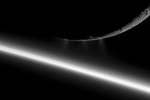 Enceladus Looms
Enceladus Looms
12.05.2011
A sunlit crescent of Saturn's moon Enceladus looms above the night side of Saturn in this dramatic image from the Cassini spacecraft. Captured on August 13, 2010 looking in a sunward direction during...
|
January February March April May June July |
|||||||||||||||||||||||||||||||||||||||||||||||||